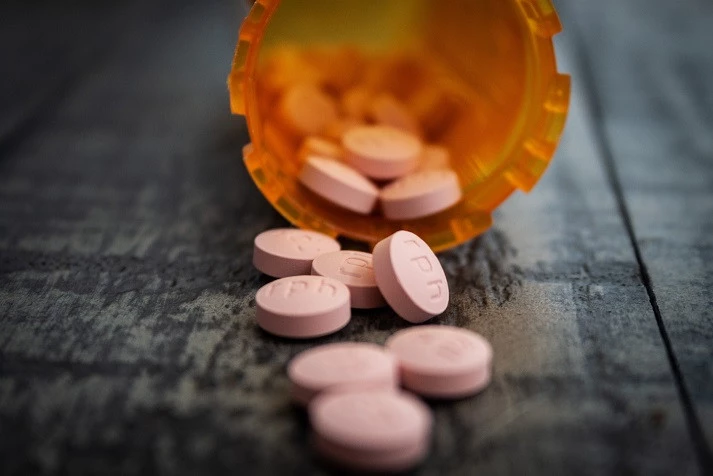A guide to manufacturing biologics
We take a look at the complexities of manufacturing biologics with Univercells Technologies
Add bookmark
Biologics are defined as drug products developed from living cells. They include vaccines, gene therapies, platelets and monoclonal antibodies. While they have been in existence since the 19th century, there has been a growing trend towards producing biologics over the last two decades, particularly to treat cancer and autoimmune diseases. In 2020, biologics accounted for a quarter of the global drugs market.
Developing biologics can be more complex than manufacturing non-biologic pharmaceutical drugs, which are synthesized in a lab without using parts of living organisms. Martina Sebastian, Sales and Collaborations Manager at Belgian biotech firm Univercells Technologies, explains that the process differs between different types of drug, whether they are recombinant proteins and monoclonal antibodies (mAbs), gene therapies or vaccines.
Recombinant proteins and monoclonal antibodies
Sebastian says, “For conventional biologics such as recombinant proteins and mAbs, platform processes have been established after more than three decades of development that afford high yields and leverage effective purification and analytical technologies.”
Next-generation antibodies are more complex, however, as Sebastian explains, “These often yield many more process- and product-related impurities that can be difficult to identify, characterize and remove, bringing the need for better analytics to centrecenter stage. While next-generation antibodies, such as multi-specifics, can work with tweaks to the traditional antibody platform, the analytics are much more complex.”
Gene therapies
Cell and gene therapies can present the biggest manufacturing challenges. “Existing mAb processes do not transfer for large scale viral vector production for cell and gene therapies,” Sebastian says. “In both adherent and suspension cell culture, yields are often low for the commonly used plasmid transfection step, purification solutions remain inefficient and analytic techniques are often wanting.”
“Fit-for-purpose equipment, cell lines, media, transfection reagents and other raw materials, and analytics are needed to bridge this gap,” she adds. “More than ever, process development should follow a right first-time design-of-experiment approach to optimize time and costs.”
Read more: The benefits of remote monitoring for sample storage and lab processes
The viral vectors used in these therapies are even more complex to manufacture. Sebastian explains that this is because the generated viral particles are typically toxic to the cells used to produce them. “The production of viral vectors often occurs through transient transfection. This is influenced by the type of vector being produced, the quality of the plasmids, the choice of transfection reagent and various process conditions such as temperature, dissolved oxygen and transfection complex addition rate. Significant hurdles have yet to be overcome before packaging and producer cell lines find widespread use,” she says.
Additionally scale up has been limited due to a lack of appropriate equipment. “Some manufacturers have sought to use cells modified for suspension culture to leverage existing bioreactor technology, but this is not a failsafe method.”
Vaccines
Vaccines have yet another set of manufacturing requirements. “For mRNA products, expertise in both the synthesis of the RNA drug substance and the production of the final product using complex delivery systems such as lipid or polymeric nanoparticles is required,” Sebastian says. “For nucleic acids, while the synthesis of DNA and RNA is fairly straightforward, the production of these products in their final forms requires specialized expertise.”
Fit-for-purpose, scalable bioreactors for upstream viral vector manufacturing are already helping companies improve scalability while there are new transfection reagents that have been specifically designed for these processes.
Read more: How to deploy single-use technology to control frozen bulk drug storage
“Advances in technology for the purification of viral vectors, including membrane, resin and fiber-based chromatography solutions, are improving downstream performance,” Sebastian adds. “Meanwhile, continued development of analytic technologies for all types of novel biologics are providing greater process understanding that will lead to further improvements in efficiency and productivity.”
The future of biologics manufacturing
Sebastian says that emphasis on better designed processes from the R&D phase is the next great hurdle for this industry, and new technologies will be key. “Artificial intelligence, machine learning and high-throughput experimentation combined with ever more rapid, sensitive, and robust analytic techniques are having a significant impact in this area, especially for fast-evolving new modalities.
“Equipment manufacturers, raw material suppliers, analytics vendors, drug developers, and contract research, development and manufacturing organizations all are aware of the urgent need for solutions that will accelerate advanced drug development and reduce costs.”
Quick links:
- Reducing the drug discovery life cycle with AI
- The latest in cancer treatments: Recreating the tumor environment
- How to improve manufacturing process efficiency to increase speed-to-market
Get exclusive access to member-only articles, reports, videos, interviews, webinars and other premium content from industry experts and thought leaders by signing up to Pharma IQ here.























